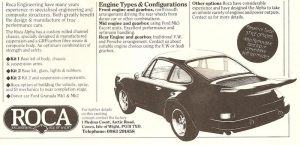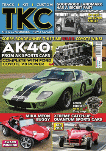STEVE HOLE tells the story of the UK’s first Porsche 911 replica. No, it wasn’t the Covin, rather, we’re talking about the Pulsar.
When we think of Porsche 911 replicas one always instantly thinks ‘Covin’. However, it may be the best-known but it wasn’t the first. That accolade belongs to the Pulsar!
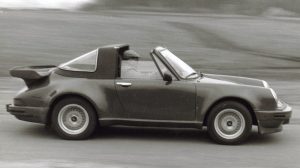
Unlike the Covin the Pulsar didn’t use a shortened VW Beetle floorpan but rather a box section ladderframe instead, although the veedub parts bin was plundered for items such as front axle, steering and air-cooled engine.
The pedigree of the people behind the project meant that it should have been a winner. It was VW and Porsche specialist and parts importers, Motohouse run by Tim Kemp (Princes Risborough) along with Steve Collins of Amplas based in Chalgrove, Oxfordshire.
Amplas’ main business was supplying replacement 911 panels to Autofarm while they also had previous with the kitcar industry having been responsible for the SN1, too, which was a collaboration between Motohouse and Autofarm.
The Pulsar was actually intended to be a Porsche 911-based beach buggy but the partners weren’t happy with it and destroyed the prototype before it reached the market. Instead, they embarked on a 911-inspired kit instead. The VW Beetle floorpan was chopped by 12in and a box-section reinforcement frame with pick-up points for the Beetle’s torsion bar front end and swing axle rear was added.
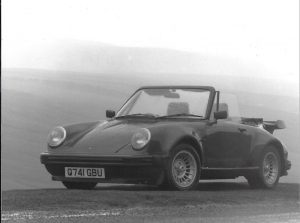
The Pulsar was 6in shorter and 2in narrower than a 911 and originally had external door hinges and no returns on GRP panels while the chassis was described as being a bit ‘vague’. A ‘whale’ tail spoiler was an option while the rear window was Perspex and the company pre-hung the doors. Collins and Kemp’s demo car featured an 1850cc twin-carb demo big bore Beetle engine delivering 118bhp.
It didn’t really happen for Amplas so the project was sold to Lancaster-based, Lemazone after a couple of years, run by boat-builder Mike ‘Parky’ Parkington, who had previously built possibly the only Kingfisher Countesses to ever hit the public highway (he built two and was obviously a hardcore glutton for punishment!). He was also the northern agent for Dutton Cars, for a time.
He was a bit of a trader in light commercials, boats, and canoes and also undertook kit-building work and GRP repairs. Although I don’t think he ever used them in anger Parkington also owned the Beaujangle Can-Am moulds, too.
Amplas 1984-85
Lemazone 1985-87
Approx 16 made
A quick mention of the Amplas SN1 is in order, I think.
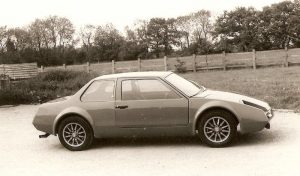
Amplas, a Princes Risborough-based operation was run by partners, Steve Collins, a skilled fibreglass laminator, who worked at Porsche specialist, Autofarm and local hairdresser, Neil Morgan.
After a pub talk session on cars, the duo decided to look at becoming car manufacturers. The SN1 originated out of Mike Carlton’s (MBC/Embeesea) Eurocco prototype, which was intended as a sister model to that company’s Charger, although the success of that meant it was shelved.
It actually came from an idea from Peter Filby who suggested to Carlton that a new 2+2 model might be a good idea and proposed, Richard Oakes as designer of said new car.
The result didn’t excite Carlton sufficiently and he reckoned that it would be too hard to produce bodies from the new moulds and so set about altering the Oakes design and creating a new Eurocco of his own, although he did sell a couple of bodies, before dumping the moulds into a hedge in his yard.
Collins and Morgan went to MBC as potential Charger customers and a general look around at how a kitcar manufacturer operated and spotted Oakes’ Eurocco moulds with grass and lichen growing on them. They enquired about them and Carlton replied: “Oh, the Eurocco, I never really finished that project.”
One and one made two and Collins and Morgan were soon putting the car into kit production using a barn borrowed from a friend in which to build their first demo car. It’s said that the moulds took 100 hours to put right.
Various reasons for its failure. It had an incredible amount of fibreglass in its body and parts came from all over the place – Escort Mk2 windscreen, door windows from Cortina Mk3 two-door, rear window from Cortina Mk3 Estate, Fiat 126 quarter lights, door hinges from Bedford CF van etc etc.
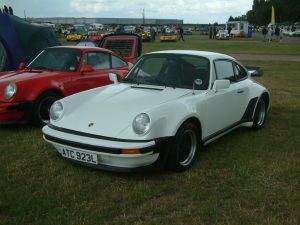
The SN1 i.e. the Oakes-designed Eurocco was a 2+2 notchback, but Carlton’s revised version, also later known as the Eurocco was a Fastback. Confused? You should be! Collins was later involved with the Pulsar a Porsche 911 lookalike, which is where we came in, of course.
